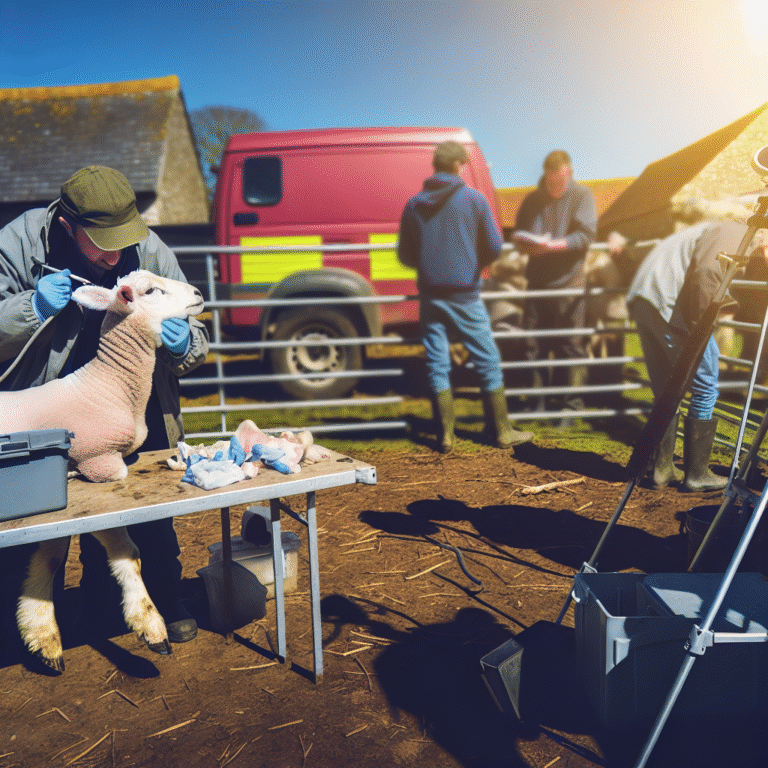Lamb Mortality Continues to Plague South Greenland Sheep Breeders
Sheep breeders in South Greenland are grappling with an alarming trend: lamb mortality remains a persistent issue. Siiku Bjerge, a sheep breeder from Eqaluit Akia and deputy chairman of the Savaatillit Peqatigiit Suleqatigiissut (SPS), emphasizes the challenge’s significance as breeders work to stabilize their livelihoods.
Recently, a draft report from the Department of Nature, part of Greenland’s self-governing framework, began its journey through public consultation. This report, which investigates the troubling rate of lamb mortality, reflects insights gathered from local sheep breeders between 2022 and 2024. The feedback received during this consultation process will guide the Department of Nature and Environment as it refines the document for Nalaakkersuisut’s review. The updated draft is poised for discussion among members of the Inatsisartut in the ongoing autumn session.
This ongoing inquiry is further detailed in a memo from Bentiaraq Ottosen, the Naalakkersuisut’s Minister for Social Affairs, Labor Market, Internal Affairs, and the Environment, addressed to Marianne Paviasen Jensen from the Inuit Ataqatigiit party. Jensen, a member of the Inatsisartut, raised concerns regarding the status of the lamb mortality investigation through section 37 of parliamentary procedure.
Investigation Overview
The investigation into lamb mortality engaged 41 of the 45 registered sheep breeders through interviews and questionnaires conducted in 2023 and 2024. The goal is to better understand the multifaceted reasons behind the significant annual losses of lambs. Participants provided estimations of lamb deaths over previous years, an effort Bentiaraq Ottosen believes is crucial for devising effective solutions to combat this pressing issue.
“The annual data collected by Savaatillit Peqatigiit Suleqatigiissut serves as a vital resource,” Ottosen notes. Over the years, this organization has systematically compiled information from sheep farmers, monitoring the number of lambs born, those lost, and the identifiers behind these losses. “Such data enables us to track trends in lamb production and mortality, establishing a foundation for identifying actionable areas.”
The investigation aims to incorporate data from as many sheep breeders as possible to enhance the report’s comprehensive calculations.
Complex Causes of Mortality
While the issue of lamb mortality is widespread, Siiku Bjerge points out that its severity varies across different regions. Although precise statistics on lamb deaths remain elusive, there’s no doubt that this crisis has substantial implications for the income of sheep farmers.
Bjerge identifies a range of contributing factors: “One significant concern is the presence of rabid foxes. These predators attack both sheep and lambs, necessitating the culling of affected animals, which is a serious issue in certain areas.” He notes that there’s a market for fox pelts, motivating sheep farmers to control their population.
However, environmental conditions also play a role in mortality rates. “Heavy snowfall poses a particularly vexing challenge,” he explains. “Lambs and ewes can perish under such conditions, and multiple factors influence overall lamb mortality. It’s difficult to pinpoint a single cause.”
Despite these challenges, Bjerge remains optimistic about the future of sheep farming in the region. Even though the number of sheep farmers in South Greenland has been gradually declining, he observes a renewed interest among younger generations in pursuing this age-old profession.
As the investigation progresses and the findings shape future policies, one thing remains clear: the resilience of South Greenland’s sheep farmers will be tested as they navigate the complex landscape of lamb mortality.
